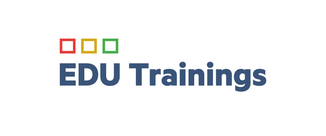Detail kurzu
3-5501 – Content Manager Administration Fundamentals
EDU Trainings s.r.o.
Popis kurzu
This three-day Administrator-level course teaches students how to set up and configure OpenText™ Content Manager for Enterprise use.
In this course, you will learn about security and locations. You will create retention schedules and holds, and set up classifications/categories. You will learn about record types, action tracking, system options, and troubleshooting tips. You will also perform audit configuration and auto- classification. Finally, you will learn about advanced disposal, client-matter functionality, and the export and import functionalities (DataPort).
During this course, you will listen to lectures, participate in guided demonstrations, and complete a series of hands-on labs. On completion of this course, you should be able to:
• Set up Content Manager security.
• Set up Content Manager locations.
• Create and maintain retention schedules and holds.
• Set up additional fields.
• Use structured titling options.
• Create and maintain a classification system (a record plan).
• Define record types.
• Use action tracking.
• Describe Content Manager indexing.
• Perform and configure Content Manager administrative options.
• Create a document store.
• Set up auto-classification.
• Set up audit configuration options.
• Use Client-Matter functionality.
• Use the import and export options.
• Set up a disposal workflow.
• Review general troubleshooting, tips, and maintenance.
In this course, you will learn about security and locations. You will create retention schedules and holds, and set up classifications/categories. You will learn about record types, action tracking, system options, and troubleshooting tips. You will also perform audit configuration and auto- classification. Finally, you will learn about advanced disposal, client-matter functionality, and the export and import functionalities (DataPort).
During this course, you will listen to lectures, participate in guided demonstrations, and complete a series of hands-on labs. On completion of this course, you should be able to:
• Set up Content Manager security.
• Set up Content Manager locations.
• Create and maintain retention schedules and holds.
• Set up additional fields.
• Use structured titling options.
• Create and maintain a classification system (a record plan).
• Define record types.
• Use action tracking.
• Describe Content Manager indexing.
• Perform and configure Content Manager administrative options.
• Create a document store.
• Set up auto-classification.
• Set up audit configuration options.
• Use Client-Matter functionality.
• Use the import and export options.
• Set up a disposal workflow.
• Review general troubleshooting, tips, and maintenance.
Obsah kurzu
Module 1: Course Overview• Identify the course objectives.
• View the course schedule and logistics.
• View eBooks in different ways.
• Access lab environment details and instructions.
Module 2: New Features and Enhancements
• Identify new features and enhancements in Content Manager 23.4.
Module 3: Security
• Access the security levels/classifications.
• Access security caveats/supplemental markings.
• Describe the new default terminology.
• Create security levels/classifications.
• Create security caveats/supplemental markings.
• Delete security levels/classifications and caveats/supplemental markings.
• Apply security levels/classifications and caveats/supplemental markings.
• Explain Additional information – Security.
• Access and apply access controls.
• Apply access controls – Locations.
• Apply access controls – Record types.
• View access rights.
• Explain Additional Information – Access Control.
Module 4: Locations
• Access the locations.
• Describe types of locations – icons.
• Create a location.
• Explain the differences with location types.
• Manage and delete locations.
Module 5: Retention Schedules and Holds
• Access the retention schedules.
• Create retention schedules.
• Delete retention schedules.
• Recalculate triggers in retention schedules.
• Move retention schedules.
• Re-index retention schedules.
• Use retention schedules with records.
• Access holds.
• Create a hold.
• Use a hold.
• Perform event-based archiving
Module 6: Additional Fields
• Access the additional fields.
• Explain the new default terminology.
• Create additional fields.
• Apply additional fields.
• Create managed lookup sets.
Module 7: Structured Titling Options
• Access the classifications/categories.
• Access the thesaurus.
• Describe the new default terminology.
• Review the Numbering Pattern Character Options chart.
• Create a classification.
• Explore the Additional Information – Other tabs.
• Create a new thesaurus term.
• Establish thesaurus term relationships.
• Describe additional information.
Module 8: Record Types
• Access the record types.
• Describe the new default terminology.
• Explore the properties of record types.
Module 9: Action Tracking
• Access the actions/procedures.
• Create actions/procedures.
• Delete actions/procedures.
• Link actions/procedures.
• Show actions/procedures.
• Reassign or complete actions/procedures.
• Compare actions/procedures to workflow.
Module 10: Content Manager Indexing
• Describe Content Manager indexing.
• Describe Elasticsearch integration.
• Create Elasticsearch indexing.
• Create IDOL indexing.
Module 11: System Administration Options
• Name the system administration options.
• Describe the effect of each option on the behavior of a Content Manager database.
• Describe the Metadata Validation rule.
Module 12: Document Store
• Describe the document stores.
• Create a document store.
• Describe a document store with security compliance.
• Enable hash checking.
• Describe Cloud storage support.
Module 13: Auto-Classification
• Set up auto-classification.
• Run auto-classification.
• Review auto-classification.
Module 14: Audit Configuration Options
• Enable auditing on a dataset.
• Access audit logging options.
• Use the Content Manager Audit Options tabs.
• View active events.
• View audit log files.
Module 15: Import and Export (Dataport)
• Access DataPort.
• Create imports and exports.
• Use the DataPort project menus.
• Access the DataPort interface sections.
Module 16: Disposal Workflow
• Describe disposal work flow.
• Create destroy consignment.
• Review destroy consignment.
• Approve/reject consignment.
Module 17: Client and Matter Functionality
• Summarize the Clients and Matters legal structure.
• Set up Client and Matter functionality.
• Work with Client and Matter records.
Module 18: General Troubleshooting, Tips, and Maintenance
• Describe audit logs.
• Describe log directories.
• Explore unknown locations.
• Describe group locations.
• Describe reindex and recalculate triggers.
Cieľová skupina
The audience includes, but is not limited to: Content Managers, Records Coordinators, Administrators, senior business staff, power users, Inquiry Users, and/or core project team members
Certifikát
Na dotaz.
Hodnotenie
Organizátor
Podobné kurzy
podľa názvu a lokality








